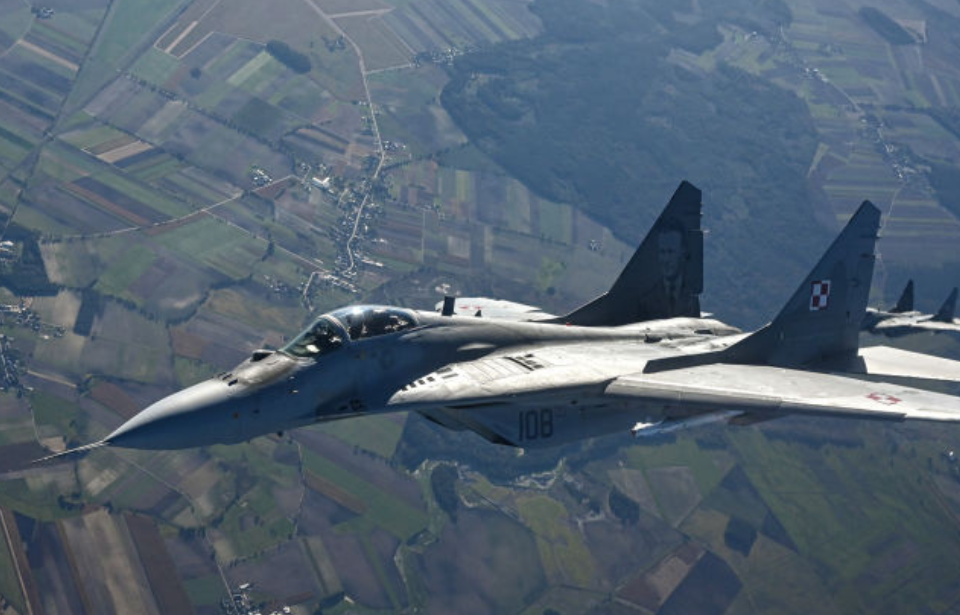The Mikoyan MiG-29 Fulcrum is a Soviet-era fighter designed primarily for air superiority. Debuting in the 1980s, it quickly became known for its impressive speed, nimble handling, and overall combat capability. Developed during the waning years of the Soviet Union, the MiG-29 was meant to challenge leading American fighters, including the F-16 Fighting Falcon and the F-15 Eagle.
Development of the Mikoyan MiG-29 Fulcrum
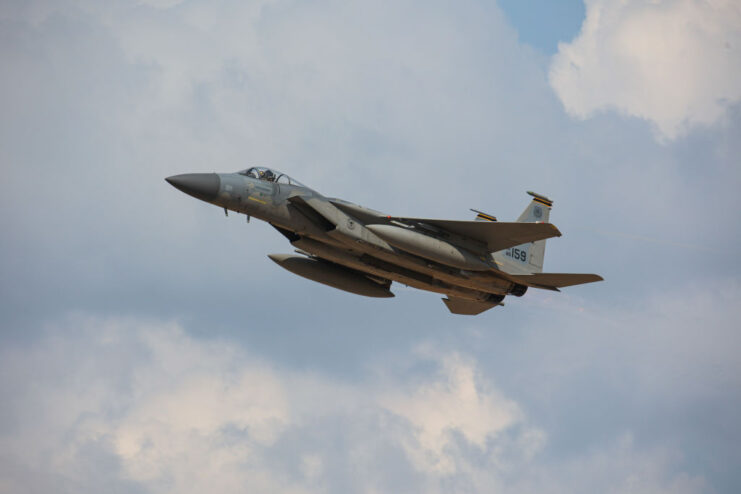
As the Vietnam War continued to rage on in the mid-to-late 1960s, the US Air Force knew it needed to develop a new fighter jet to combat the Mikoyan-Gurevich MiG-15s being supplied to the North Vietnamese by the Soviet Union. In response to what became the McDonnell Douglas F-15 Eagle, the USSR decided to develop an even more high-tech aircraft capable of a long range at Mach 2+ speed, carrying a variety of heavy armaments and complex maneuvers.
These requirements changed when officials determined that the newest Soviet jet needed to have much different specifications, with the biggest change coming in the decision to make the aircraft lightweight.
After years of development and design, what became known as the MiG-29 Fulcrum took to the skies in October 1977, with the aircraft officially entering service with the Soviet Air Forces in August 1983. Still active to this day, a number of upgrades have been applied to the original specs, resulting in quite a few, more advanced variants, including the MiG-29K Fulcrum-D and the MiG-29M Fulcrum-E.
Mikoyan MiG-29 Fulcrum specs
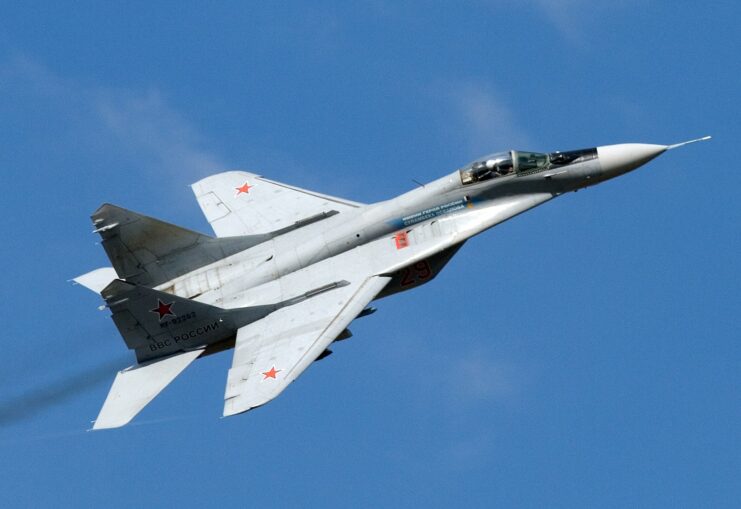
Operational service with the Soviet Union (and, later, Russia)
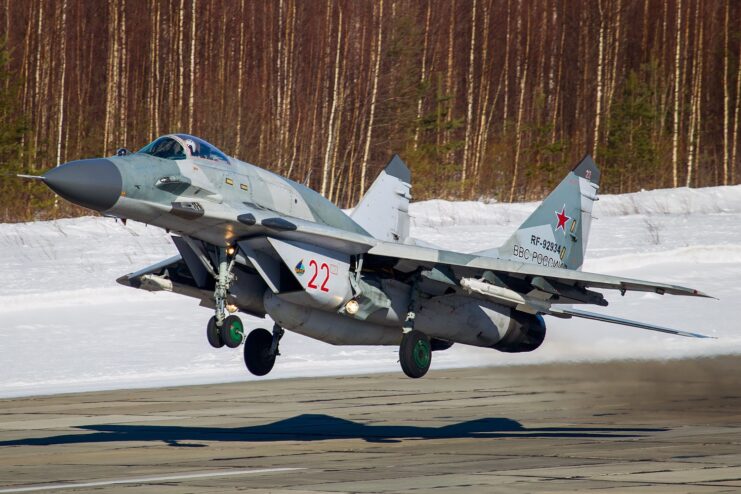
The MiG-29 Fulcrum immediately proved itself to be a superior aircraft upon entering service with the Soviet Union. Capable of taking on virtually any enemy in a dogfight, it continued to serve with the Russian Air Force following the collapse of the USSR, with approximately 600 (original and variants) still being flown by the service.
Despite being several decades old, the MiG-29 hasn’t really seen that much combat with the Russians, with the aircraft largely being flown at airshows, with some crashes reported. That being said, the SMT variant was deployed as part of the Syrian Civil War in 2017, conducting bombing missions and escort duties.
Outside of Russia, another Soviet country to equip the MiG-29 is Ukraine, with whom it has seen much more action. In 2014, the Ukrainian Air Force deployed many during the Russian invasion of Crimea and the War in Donbas. More recently, they’ve taken to the skies as part of the Russo-Ukrainian War, making them a target of Russian missile strikes.
Exported to a number of air forces across the world
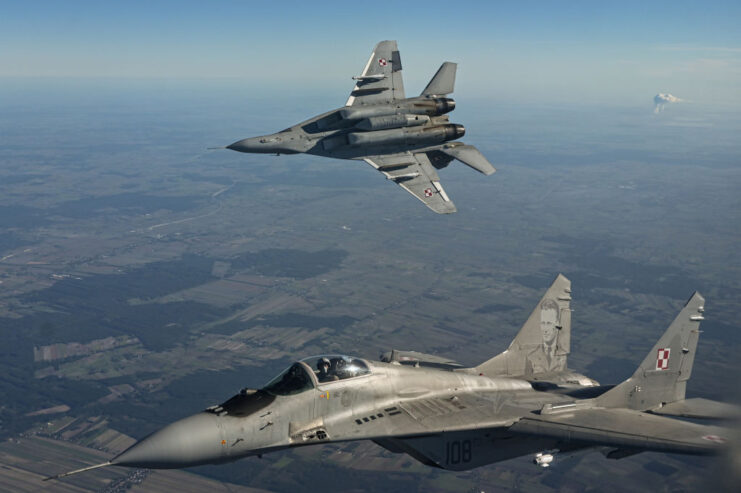
Because of its advanced features and agility, the MiG-29 Fulcrum became a popular export for Russia. Many countries bought their own versions of the jet, with East Germany being one of the earliest buyers—acquiring 24 aircraft in the mid-1980s. After the fall of the Berlin Wall, these jets were taken over by the West German Luftwaffe and stayed in service until the final MiG-29 was transferred from Germany in 2004.
India was another major customer and made history as the first international purchaser and non-Warsaw Pact country to buy the MiG-29. In 1984, the Indian Air Force ordered 44 jets and continued to add more over time. The MiG-29 was used during the Kargil War and later received upgrades that included improved avionics and modern weapons.
Today, countries such as North Korea, India, Iran, Cuba, Bulgaria, Poland, and Peru still operate the MiG-29.
Enduring legacy of the MiG-29 Fulcrum
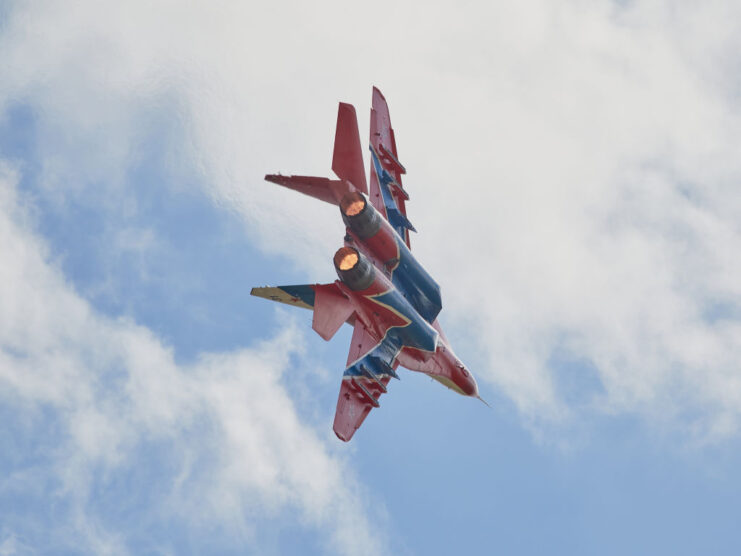
More from us: The Magic Engineering Behind Why Early Fighters Didn’t Shoot Their Own Propellers
The legacy of the MiG-29 is evident in the design of newer aircraft such as the Mikoyan MiG-35. Regarded as a fifth-generation multirole fighter, the MiG-35 made its maiden flight in 2016 and entered service with the Russian Air Force in 2019. Drawing from the MiG-29’s established framework, the MiG-35 incorporates advanced avionics, enhanced maneuverability, and state-of-the-art weapons systems, creating a more versatile and capable aircraft for today’s combat environments.
